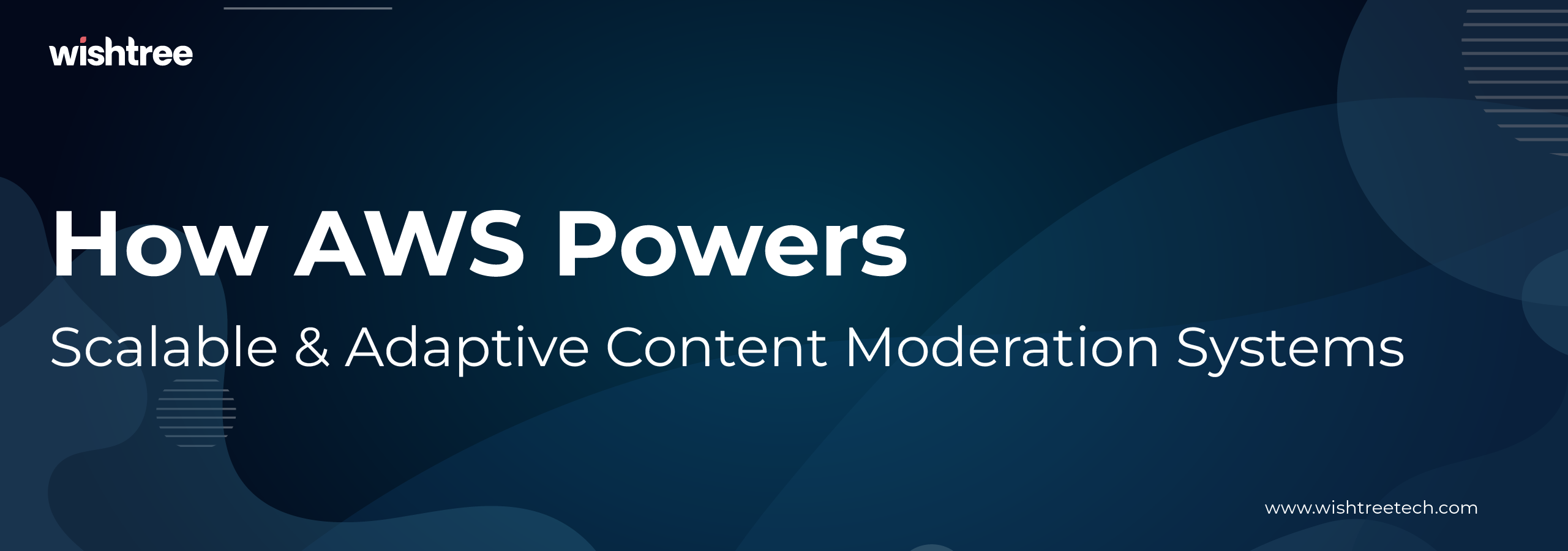Table of Contents
If you have noticed, user-generated content has become the lifeblood of many online platforms now.
From bustling marketplaces to vibrant social networks, the volume of content being shared is simply staggering. However, this explosion of user-generated content has also brought with it a growing number of challenges, including spam, misinformation, and harmful content.
The Evolving Threat Landscape
Spammers, misinformation spreaders, and malicious actors are constantly evolving their tactics to circumvent traditional moderation methods. With the advent of AI, these threats have become all the more sophisticated.
For instance, spammers are now employing sophisticated techniques to disguise affiliate links within seemingly genuine product reviews, while misinformation spreads rapidly through deceptive memes and coordinated campaigns.
The Need for Intelligent Moderation
To effectively combat these challenges, you need to implement advanced moderation solutions that can keep pace with the evolving threat landscape.
AI-powered content moderation engines offer a promising solution by leveraging machine learning algorithms to automatically identify and remove harmful content.
Key benefits of AI-powered content moderation
- Scalability: AI can process vast amounts of content quickly and accurately, even as your platform grows.
- Efficiency: AI automates routine tasks to free up human moderators. Then, they can focus better on more complex cases.
- Consistency: AI can ensure consistent enforcement of community guidelines. This, then reduces the risk of bias or inconsistencies.
- Adaptability: AI models can learn from new data and adapt to emerging patterns of harmful content, keeping your moderation system up-to-date.
How AI-Powered Content Moderation Works
An AI-powered content moderation engine typically follows a multi-step process:
- Detection: The engine uses natural language processing (NLP) and machine learning algorithms to scan content for potential violations of community guidelines.
- Evaluation: Detected issues are evaluated to determine their severity and context. This may involve a combination of automated analysis and human review.
- Decision: Based on the evaluation, the engine decides on the appropriate action, such as allowing, flagging, or blocking the content.
- Execution: The decided action is implemented in real-time.
- Logging: The entire process is logged for transparency and accountability.
Building an AI-Powered Content Moderation Engine with AWS
AWS provides a robust suite of AI services that make it easier than ever for businesses to build scalable and efficient content moderation systems.
Here’s a breakdown of how an AI-powered content moderation engine works and the key AWS services involved – see what you can do with them!
- Data Collection and Preparation: Gather a diverse dataset of content examples, including both harmless and harmful content. Clean and preprocess the data to ensure it is suitable for training the AI model.
- Model Training: Use AWS SageMaker to train a machine learning model on your dataset. You can choose from various algorithms, such as natural language processing (NLP) and computer vision, depending on the type of content you’re moderating.
- Model Deployment: Once the model is trained, deploy it to a production environment using AWS SageMaker or AWS Lambda. This allows the model to process incoming content in real-time.
- Content Moderation: As new content is uploaded to your platform, it is passed through the trained model. The model analyzes the content and assigns a probability score indicating whether it is harmful or not.
- Actionable Insights: Based on the model’s predictions, you can take appropriate actions, such as removing harmful content, flagging it for human review, or sending notifications to users.
Key AWS Services for Content Moderation
- Amazon Comprehend: For natural language processing tasks like sentiment analysis, entity recognition, and topic modeling.
- Amazon Rekognition: For computer vision tasks like object detection, image moderation, and facial analysis.
- Amazon SageMaker: For building, training, and deploying machine learning models.
- AWS Lambda: For running serverless functions to process content in real-time.
How to build Your AI-Powered Content Moderation Engine
Step 1: Data Collection and Preparation
The foundation of a robust AI-powered content moderation engine is high-quality training data. It’s crucial to collect a diverse dataset that accurately represents the types of content your platform encounters. This is done to ensure effective moderation.
Key considerations for data collection
- Relevance: Collect content that aligns with your platform’s specific moderation needs, such as hate speech, explicit content, harassment, or misinformation.
- Diversity: Make sure that your dataset includes a variety of content types (text, images, videos) and covers different scenarios to prevent bias in the model.
- Quality: Label each piece of content with the appropriate moderation category. This is done to ensure label quality through multiple reviewers or expert validation.
Step 2: Data Preprocessing
Once you’ve collected and labeled your data, it’s essential to preprocess it to maintain consistency and improve model performance.
- Data Cleaning: Remove noise, correct errors, and standardize formats to make sure of the data quality.
- Text Preprocessing: Apply techniques like tokenization, lowercasing, stopword removal, and lemmatization to prepare text data for analysis.
- Image Preprocessing: Resize, normalize, and augment images to enhance model training.
- Video Preprocessing: Extract frames and compress videos to reduce processing time.
Data Splitting
To effectively train and evaluate your model, split your dataset into training, validation, and test sets. The training set is used to teach the model, the validation set helps fine-tune hyperparameters, and the test set evaluates the model’s performance on unseen data.
AWS for Data Storage and Management
- Amazon S3: Use Amazon S3 to securely store your collected user-generated content (UGC). Organize your storage by creating separate buckets for different content types and implement appropriate access controls.
- Amazon SageMaker Ground Truth: Streamline the labeling process using Amazon SageMaker Ground Truth. It provides tools for efficient annotation and quality management.
Step 3: Model Building and Training
The next step is to build and train the machine learning models that will power your content moderation engine.
Choosing the Right Model Architecture
- Text Classifiers: For detecting inappropriate language, hate speech, or sensitive information, consider using models like recurrent neural networks (RNNs), long short-term memory (LSTM) networks, or transformer-based architectures.
- Image Classifiers: Convolutional neural networks (CNNs) are a popular choice for identifying explicit visual content.
Model Training and Refinement
- Iterative Process: Model training is an iterative process. Continuously refine your model. Keep adjusting hyperparameters, experimenting with different architectures, and incorporating additional data.
- Evaluation Metrics: Use metrics like accuracy, precision, recall, F1 score, and response time to assess your model’s performance. We are coming to it.
- False Positives and Negatives: Pay close attention to false positives (acceptable content flagged as violating) and false negatives (violating content not caught by the model). These errors can significantly impact user experience and platform safety.
Training Options with AWS
- Custom Model Training: Use Amazon SageMaker to train custom models on your specific dataset. This approach offers maximum flexibility but requires a significant amount of data and expertise.
- Fine-tuning Pre-trained Models: Use Amazon Bedrock to fine-tune pre-trained foundation models for content moderation tasks. This can be more efficient, especially with limited datasets.
Enhancing Model Capabilities with AWS Services
- Amazon Comprehend: Integrate Amazon Comprehend to enhance text analysis capabilities, including sentiment analysis, key phrase extraction, and identifying potentially inappropriate language.
- Amazon Rekognition: Utilize Amazon Rekognition for image and video analysis, detecting objects, scenes, and inappropriate visual content.
Step 4: Model Testing and Evaluation
Once your model is trained, it’s crucial to rigorously test it to ensure it’s performing as expected.
Key Evaluation Metrics
- Accuracy: Overall correctness of predictions.
- Precision: Proportion of true positives among all positive predictions.
- Recall: Proportion of true positives identified correctly.
- F1 score: Harmonic mean of precision and recall.
- Response time: How quickly the model makes predictions.
Thorough Testing
- Test Keyword and Regex Filters: Evaluate the effectiveness of keyword and regular expression filters with various inputs.
- Semantic Filters: Test semantic filters on edge cases and subtle policy violations.
- Adversarial Testing: Use adversarial testing to identify potential vulnerabilities and improve robustness.
Continuous Monitoring
- Amazon SageMaker Model Monitor: Use Amazon SageMaker Model Monitor to track your model’s performance over time and identify when retraining might be necessary.
Step 5: Building the Moderation Pipeline
Once you’ve trained and evaluated your models, you need to integrate them into a real-time content moderation pipeline.
Content Ingestion
- Real-time Streaming: Use Amazon Kinesis or Amazon MSK (Managed Streaming for Kafka) to efficiently handle incoming content streams. This ensures low latency and high throughput.
Preprocessing
- Consistency: Apply the same preprocessing techniques you used during model training to secure consistency and optimize model performance.
Model Integration
- Amazon SageMaker Endpoints: Use Amazon SageMaker endpoints to deploy your trained models for real-time inference.
- Auto-Scaling: Configure auto-scaling to handle varying workloads efficiently.
Post-processing Logic
- Decision Rules: Define threshold-based decision rules to convert raw model predictions into actionable decisions.
- Human Review: Flag content that falls within specific thresholds for human review.
Pipeline Orchestration
- AWS Step Functions: Use AWS Step Functions to define and manage the workflow of your moderation pipeline.
Step 6: Human Review System Implementation
While AI can handle the majority of content moderation tasks, human oversight is still essential for managing edge cases and ensuring accuracy.
Key Components of Human Review System
- Intuitive Interface: Use AWS Amplify to create an intuitive interface for human moderators to review flagged content efficiently.
- Workflow and Escalation: Develop a workflow that addresses edge cases and potential false positives, including an escalation system for challenging situations.
- Amazon Augmented AI (A2I): Integrate A2I to seamlessly blend human review with AI workflows. Then, this enables efficient human review of machine learning predictions. And, it also provides a feedback loop for model improvement.
Step 7: Deployment and Beyond
The final stage goes like this.
Seamlessly integrating your AI moderation engine into your existing platform, deploying it for real-world use, and then? Establishing a system for continuous monitoring and improvement.
Integration and Deployment
- API Gateway: Use Amazon API Gateway to create and manage APIs for your moderation service. This will let your platform interact with the moderation engine seamlessly.
- Deployment Options: Choose from AWS Elastic Beanstalk for easy management or Amazon ECS for containerized deployments based on your specific needs.
- Monitoring and Optimization: Implement comprehensive logging and monitoring. Use Amazon CloudWatch to track key metrics like moderation accuracy, response times, and throughput. Set up alerts to identify potential issues and ensure smooth operation.
Continuous Improvement
- Data Updates: Regularly update your training data with new examples. Focus on edge cases and evolving content trends, to maintain your model’s effectiveness.
- Model Retraining: Retrain your AI model periodically to adapt to changing content patterns and maintain high performance over time.
- Leveraging Feedback: Encourage user feedback on moderation decisions. Review moderation decisions and feedback regularly to identify areas for improvement and also to adjust your policies accordingly.
Advanced Deployment Considerations
- API Design Flexibility: Consider using AWS Lambda and AWS EventBridge for event-driven, serverless architectures. This provides more flexibility for triggering moderation workflows and integrating with other services.
- Deployment Options: Indeed, Elastic Beanstalk and ECS are great options for you. But exploring serverless options like AWS Lambda and managed container deployments with AWS Fargate can further simplify deployment and reduce operational overhead.
More Challenges of AI Content Moderation
Handling Nuanced Cases
One of the biggest challenges in AI content moderation is handling nuanced cases that require human judgment. Sarcasm, cultural references, and context-dependent content can often confuse AI models, leading to false positives or missed violations.
Solution:
- Hybrid Approach: Combine AI with human moderation to leverage the strengths of both. Use Amazon Augmented AI (A2I) to seamlessly integrate human review into your AI workflows.
- Human-in-the-Loop: Reserve human review for complex cases that require nuanced understanding and subjective judgment.
Keeping Up with Evolving Standards
Online norms and cultural expectations are constantly evolving. This makes it challenging to keep moderation systems up-to-date.
Solution:
- Continuous Learning: Implement a continuous learning pipeline using Amazon SageMaker to retrain your models with fresh data regularly.
- Human Feedback: Establish a feedback loop where human moderators can provide valuable insights and flag emerging trends. This is to make sure that your AI remains culturally aware and up-to-date.
Tackling Multimodal Content
Users increasingly share a variety of content types, including text, images, videos, and audio. Moderating this multimodal content requires a comprehensive approach.
Solution:
- Multimodal Moderation: Make use of AWS services like – Amazon Rekognition for image and video analysis, Amazon Transcribe for speech-to-text conversion, and Amazon Comprehend for text analysis. Makes it way easier to create a robust multimodal moderation system!
Balancing Accuracy and Scale
Moderating millions of posts with high accuracy while maintaining scalability is a significant challenge.
Solution:
- Model Optimization: Use Amazon SageMaker to fine-tune your models for both accuracy and speed.
- Tiered Moderation: Implement a tiered system. Clear-cut cases are handled automatically, while borderline cases are escalated for human review.
- Scalable Infrastructure: Take advantage of AWS’s scalable infrastructure to handle traffic spikes and ensure efficient processing.
Protecting Moderator Well-being
Reviewing disturbing content can have a negative impact on human moderators’ mental health.
Solution:
- AI-Assisted Review: Train your AI models to handle the most disturbing content. And reserve human review for less traumatic cases.
- Mental Health Support: Provide mental health support and resources for your moderation team.
- Rotation Systems: Implement rotation systems to prevent burnout and ensure a healthy work environment.
Building an Intelligent Content Moderation Engine with Wishtree
Why Choose Wishtree?
- AWS Expertise: Our team of AWS-certified architects and ML experts is well-versed in leveraging AWS services to create efficient and scalable content moderation engines.
- Tailored Solutions: We work closely with you to understand your specific needs and develop customized solutions that align with your business objectives.
- Comprehensive Approach: Wishtree offers a comprehensive approach. We cover data collection, model training, pipeline development, as well as human review systems.
- Continuous Improvement: We believe in continuous improvement just like AWS does! We ensure your moderation system keeps evolving to meet your changing requirements.
How Wishtree Can Help
- Optimize AWS Architecture: Our experts will help you optimize your AWS architecture. We will use services like Amazon S3, SageMaker, Comprehend, and Rekognition to ensure efficient and scalable content moderation.
- Develop Custom AI Models: We will work with you to develop and fine-tune AI models tailored to your specific content types and policy guidelines.
- Implement Scalable Pipelines: Wishtree will help you build scalable moderation pipelines that seamlessly integrate with your existing systems. This will get you efficient content processing and decision-making.
- Human-in-the-Loop Integration: We will assist you in implementing human-in-the-loop workflows using Amazon Augmented AI (A2I) to handle complex cases that require human judgment.
Looking to build a robust and effective AI-powered content moderation engine? Wishtree, your trusted partner is at your service.
We will protect your brand and create a safe and positive online environment for you. Book a call now!




